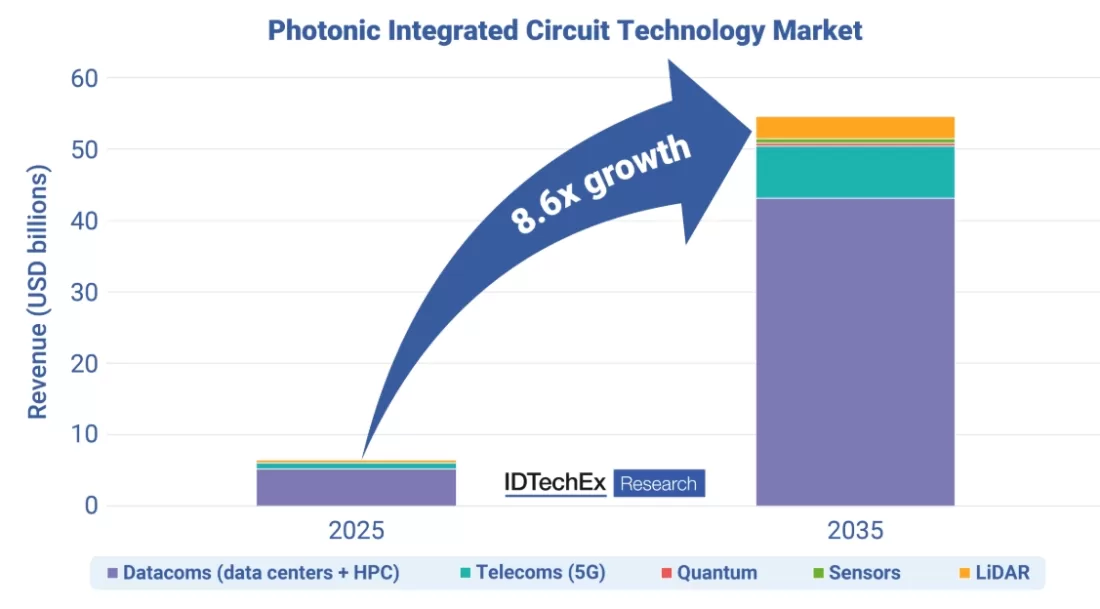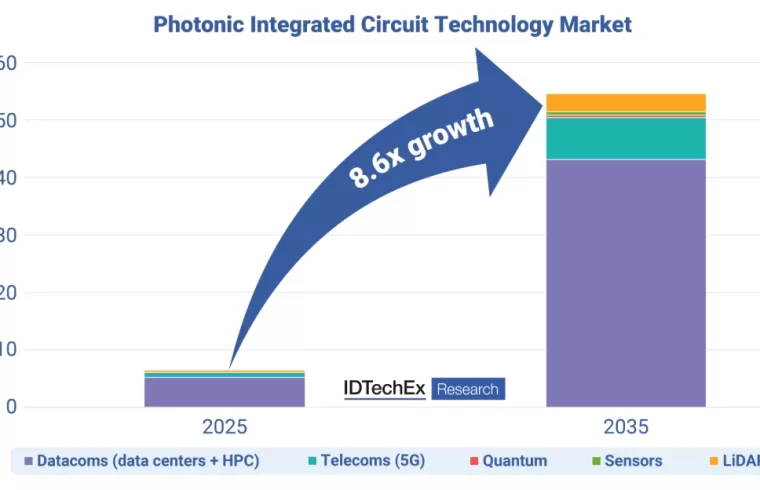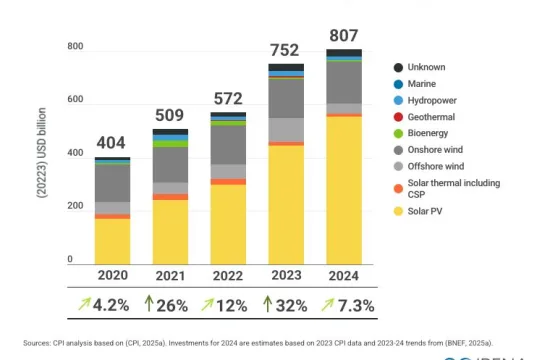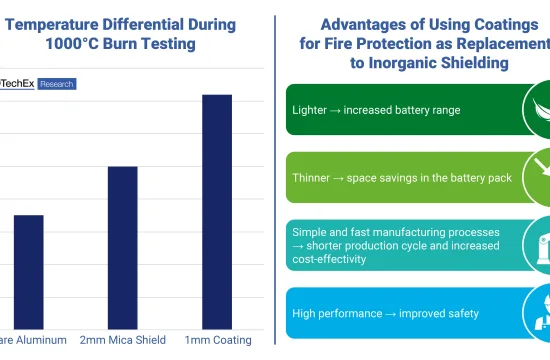
Semiconductors, co-packaged optics, and photonic integrated circuits are some of the research topics covered by IDTechEx, showcasing the advancements being made in the semiconductor industry for computing and other applications, including high-power data centers, LiDAR, and sensors.
IDTechEx’s portfolio of Semiconductors, Computing & AI Research Reports provides extensive research and forecasts within a number of markets.
Higher levels of semiconductors
The advancements towards 2.5D and 3D semiconductor packaging see wafer-level integration taking place. Such a compact packaging form factor will allow for interconnectivity between components like never before, which will expand the horizon for many applications.
Higher bandwidth can be enabled with the higher performance capabilities from these small form factors, alongside improved power efficiency. Computing performance may be enhanced with larger 2.5D packaging areas, with computing and memory units being able to be housed together.
3D semiconductor packaging specifically may see a decrease in bump pitch distance and the integration of one active die on top of another. CMOS image sensors, memory, and other computing chips could all benefit from these advancements.
Currently, 1D and 2D technologies are still largely incumbent, dominating the sector and many applications. IDTechEx’s report, “Advanced Semiconductor Packaging 2025-2035: Forecasts, Technologies, Applications”, explores the future of the semiconductor packaging market and the advancements expected to be seen over the next decade.
Co-packaged optics and miniaturization
Co-packaged optics (CPO) can allow for the optimization of power consumption and bandwidth, moving away from conventional pluggable optics. Higher signal integrity, lower latency, higher bandwidth, and better timing are all benefits of CPO technology, meaning it could revolutionize high-end data centers used for large data sets and powerful computing systems.
Pluggable optics have long been chosen for their flexibility, scalability, and ability to be replaced; however, they consume a lot of power and have limited bandwidth densities, according to IDTechEx, meaning they may struggle to keep up with the demands of data centers.
CPO sees the transceiver positioned alongside the ASIC on the same substrate as opposed to being on a PCB, creating less travel distance and greater connectivity. In the future, as CPO develops, IDTechEx reports that electrical losses could be minimized even more, with the transceiver actually positioned on the interposer itself with the ASIC for even finer interconnection. IDTechEx’s report, “Co-Packaged Optics (CPO) 2025-2035: Technologies, Market, and Forecasts”, covers the increased desire for CPO in improving computing power and evolving data centers.
PICs and the benefits of light
Photonic integrated circuits (PICs) are miniaturized optical circuits created on a semiconductor substrate. They integrate multiple photonic components, including waveguides, lasers, filters, modulators, and photodetectors, into a single functional chip.
These components, therefore, enable the generation, guidance, manipulation, and detection of light, typically at visible and near-infrared wavelengths. PICs can also offer some big advantages over electronic integrated circuits covered in IDTechEx’s report, “Silicon Photonics and Photonic Integrated Circuits 2025-2035: Technologies, Market, Forecasts”.
Light travels approximately 3 times faster than electricity, whilst incurring fewer losses over a distance and having the ability to have high information density. Despite their small size and high-performance qualities when compared to optics-based systems, the high complexities of PICs will likely mean that they need to be employed in large volumes to be economical. Silicon photonics will be one approach to PICs that will be important for reducing energy consumption during data transmission, according to IDTechEx.
Some of the main applications for PICs include high-performance optical transceivers for communication within data centers and telecoms and LiDAR for safety systems in autonomous vehicles. Sensor technology could also benefit from PIC technology, such as within wearable technology and other healthcare devices. Within quantum computing, PICs could assist in building photodetectors to detect photonic qubits. IDTechEx’s report, “Silicon Photonics and Photonic Integrated Circuits 2025-2035: Technologies, Market, Forecasts,” provides extensive research on materials, wider applications, and predictions for the technology across the next ten years.







